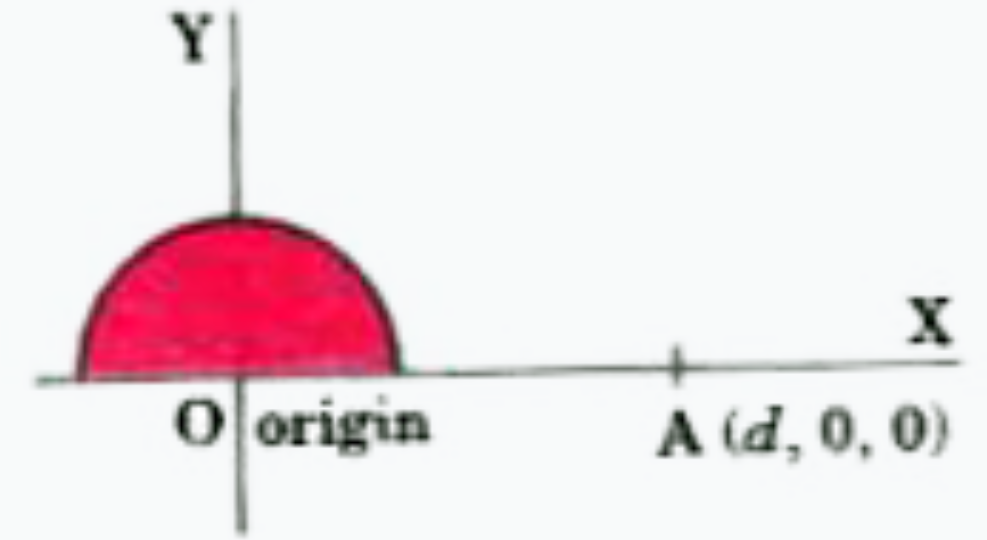Charge on a body which carries 200 electrons is
−3.2×10−18C
3.2×10−18C
−3.2×10−17C
3.2×10−17C
The correct Answer is:c
To find the charge on a body that carries 200 electrons, we can follow these steps:
Step 1: Understand the charge of a single electron
The charge of one electron is given as:
e=−1.6×10−19 coulombs
Step 2: Calculate the total charge for 200 electrons
To find the total charge for 200 electrons, we multiply the charge of one electron by the number of electrons:
Total Charge=Number of Electrons×Charge of One Electron
Total Charge=200×(−1.6×10−19)
Step 3: Perform the multiplication
Now, we perform the multiplication:
Total Charge=−200×1.6×10−19
Calculating this gives:
Total Charge=−320×10−19
Step 4: Simplify the expression
We can express this in scientific notation:
−320×10−19=−3.2×10−17 coulombs
Final Answer
Thus, the charge on the body which carries 200 electrons is:
Charge=−3.2×10−17 coulombs
---
The charge of one electron is given as:
e=−1.6×10−19 coulombs
To find the total charge for 200 electrons, we multiply the charge of one electron by the number of electrons:
Total Charge=Number of Electrons×Charge of One Electron
Total Charge=200×(−1.6×10−19)
Now, we perform the multiplication:
Total Charge=−200×1.6×10−19
Calculating this gives:
Total Charge=−320×10−19
We can express this in scientific notation:
−320×10−19=−3.2×10−17 coulombs
Thus, the charge on the body which carries 200 electrons is:
Charge=−3.2×10−17 coulombs
Topper's Solved these Questions
- ELECTROSTATICSBook:PRADEEPChapter:ELECTROSTATICSExercise:FILL IN THE BLANKS
Explore 8 Videos
- ELECTROSTATICSBook:PRADEEPChapter:ELECTROSTATICSExercise:PROBLEMS FOR PRACTICE
Explore 8 Videos
- ELECTROSTATICSBook:PRADEEPChapter:ELECTROSTATICSExercise:VALUE BASED QUESTIONS
Explore 7 Videos
- ELECTRONIC DEVICESBook:PRADEEPChapter:ELECTRONIC DEVICESExercise:Fill in the Blanks
Explore 1 Video
- MAGNETIC EFFECT OF CURRENT AND MAGNETISMBook:PRADEEPChapter:MAGNETIC EFFECT OF CURRENT AND MAGNETISMExercise:Competition Focus (Multiple Choice Questions)
Explore 2 Videos
Similar Questions
Knowledge Check
Value of charge on a body which carries 10 excess electrons is …………..
A1.6×1018CB-1.6xx10^(-18) CC−1.6×1018CD1.6×10−18CUbiquianone carries electrons from
AComplex III to complex IVBComplex I to complex IICComplex II to complex III onlyDComplex I or II to complex IIISTATEMENT-1 : A positively charged body, may have negative potential.
and
STATEMENT-2 : A positively charged body have electrons inside it.AStatement-1 is True, Statement-2 is True, Statement-2 is a correct explanation for Statement-1BStatement-1 is True, Statement-2 is True, Statement-2 is NOT a correct explanation for Statement-1CStatement-1 is True, Statement-2 is FalseDStatement-1 is False , Statement-2 is True
The amount of charge carried by an electrone is the same as carried by a K⊕ ion.
View SolutionAs is known, all mater is made up of atoms/molecules. Every atom consits of a central of a central core, called the atomic nucleus, around which negatvely charged electrons revole in ciruclar orbits. Every atom is electrically neutral. Containing as many electron as the number of protons in the nucleas.
Thus, even though normally, the materails are electrically neutral, they do contains charges, but thier charges are exactly balanced. The vast amount of charge in an object is usually hidden as the object is usually hidden as the object is said to be electracally neutral charge. With such an equality or balance of charges the object is said to be electrically neutral or uncharged. To electrify or charge a neutral body, actully transfer to the other body. The body which gains electrons become negatively charged and the body which loses electrons becomes positivelyh charged. Further, like charges repel adn unlike charges attract.
Read the above passage and answer the following questions :
(i) Every body, whether a conductor or an insulator is electrically neutral. Is it true ?
(ii) Charging lies in charge imbalance, i.e, excess charge, comment.
(iii) How do you visualize this principle being applied in our daily life ?
View SolutionName the red pigment in blood which carries oxygen in the human body ?
View SolutionThere is one non-conducting uniformly charged hemispherical body, which carries a total charge Q which is kept in such a manner that Y-axis divides it symmetrically.

The net electric field intensity at point A(d,0,0) is
View SolutionWhen we mention the charge of body we indicate only the deficit or excess of electrons in it but not protons. Why?
View Solution

